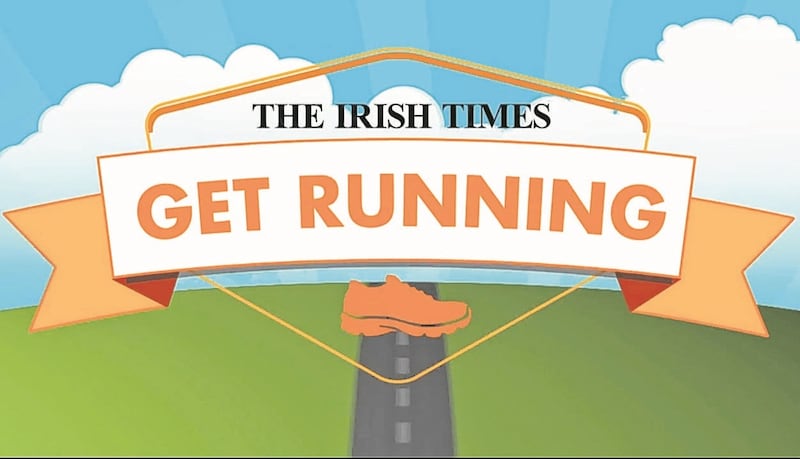Do you want to be a faster runner?
Chasing the clock on race day is what motivates many runners. We all like to cross the finish-line in a fast time, yet many runners could run smarter midweek to help their race day pace improve. Introducing a little speed-training to our week can help runners get stronger, more confident and faster overall. If all the miles we run during the week are at the same pace our body will struggle to run quicker when we call on it to perform. Adding some variety to our comfortable pace in training is essential if we want to become a faster runner.
Fear of Speed
Speed training can sound intimidating for a newbie. We may visualise speed work as endless laps of a track at a vomit-inducing pace. If you search online for speed-training tips, you may be baffled by the terminology. Having to measure distance, heart rates, recovery times and repetitions can be so complicated that it may prevent us from getting started. Try not to get overwhelmed by complex training sessions or attempting to train like an Olympic athlete. Instead, like any good practice, ease into speed work gradually. Over time you will build resilience, speed and a knowledge of how much to push yourself.
Once a Week
One speed session per week is enough for any recreational runner if you work hard and recover well. Give yourself a rest day each side of this session and continue your running week as normal.
Here are three simple yet effective speed sessions that you can try out. It will take a few attempts to work out your “fast” pace as you need to find a pace you can sustain for the duration of the interval. Be cautious rather than reckless in these early sessions until you know your capabilities.
One Minute Intervals
After 10 minutes of easy running warm-up, spend the next 10-20 minutes alternating between one fast minute and one slow minute. Your fast pace is not a sprint, but fast enough that you can sustain it for the minute and are looking forward to your slow relaxed jog for the recovery minute. Feel free to take a longer recovery if needed between speed intervals as you work out your pacing. Finish this session with an easy 10-minute cool-down.
Hill Intervals
Often recommended as one of the best type of speed session for runners, hill intervals are exactly what you might expect. You run strong up the hill and then recover slowly on the way back down. Find a gradual incline that takes anything from 30 seconds to a minute to climb. Like with the training session on the flat, make sure you were well warmed up before you start and finish with a gradual cool-down. Start with six repetitions and increase as the weeks go on. Over time you can find longer and steeper hills if you wish to step up the challenge.
Longer Intervals
Longer intervals are hugely beneficial for those training for longer distance events. You also will be training your mental strength as there is more time to listen to the voices in our head that want us to stop. Running fast for five minutes or longer may sound like torture but remember the pace is not as fast as the previous speed sessions I have suggested. The longer the interval the more you need to focus on sustaining a manageable pace from the start. For your longer interval session, aim to alternate between five minutes slow and five minutes faster over a 30 or 40 minutes run.
What to Think About
Whether the interval is as short two lampposts or as long as a kilometre, stay focused on the body by training your mind not to wander. Rather than place all attention on getting to the end as quickly as possible, give each interval a specific focus. In our speed running classes, as the runners recover from each interval, I assign them a goal for the next interval. Sometimes it might be as simple as a smile, a focus on breath or specific element of running technique. Most runners could benefit from relaxation of shoulders when they do speed work. Tension in neck and shoulders transfers downwards and limits our potential to run faster and breathe well.
Safety in Numbers
If your motivation for inflicting discomfort on your legs and lungs is limited, try organising speed sessions with a running buddy or a group. You don’t even need to be the same pace as the other runners. Follow each other’s footsteps as you go up and down the same path.

The camaraderie will keep you on track and you are less likely to talk yourself into reducing the number of intervals or intensity as the session progresses, which I know from personal experience is very easy to do when training alone. It is hard to get started, but like any good training session, you feel proud, exhilarated and powerful afterwards.
Before You Start
Find an area that is bright and obstacle free. You don’t want to have to spend your run looking down to avoid tripping. Having a clear path for speed work allows you to relax and focus on the task at hand. If you are lucky enough to have a track, take advantage, otherwise find a well-lit area that you are comfortable with.
Accept the Challenge
No matter how often you do speed work, it never gets easier, you just get better. Your body adapts and you get stronger, quicker and more comfortable being uncomfortable. There are endless opportunities for adding in variations and time targets to speed sessions but start by accomplishing the basics and the rest will follow. Speed work trains the body physically but also mentally to stay focused and build resilience. These training sessions don’t take any more time than going for an average 5k run but can really help us to improve not only our speed but our running motivation and confidence. Give it a try this week and see how you get on.
Mary Jennings is founder of ForgetTheGym.ie.

Sign up for one of The Irish Times' Get Running programmes (it is free!).
First, pick the programme that suits you.
- Beginner Course: This programme is an eight-week course that will take you from inactivity to being able to run 30 minutes non-stop.
- Stay On Track: The second programme is an eight-week course for those of you who can squeeze in a 30- to 40-minute run three times a week.
- 10km Course: This is an eight-week course designed for those who can comfortably run for 30 minutes and want to move up to the 10km mark.
Best of luck!




